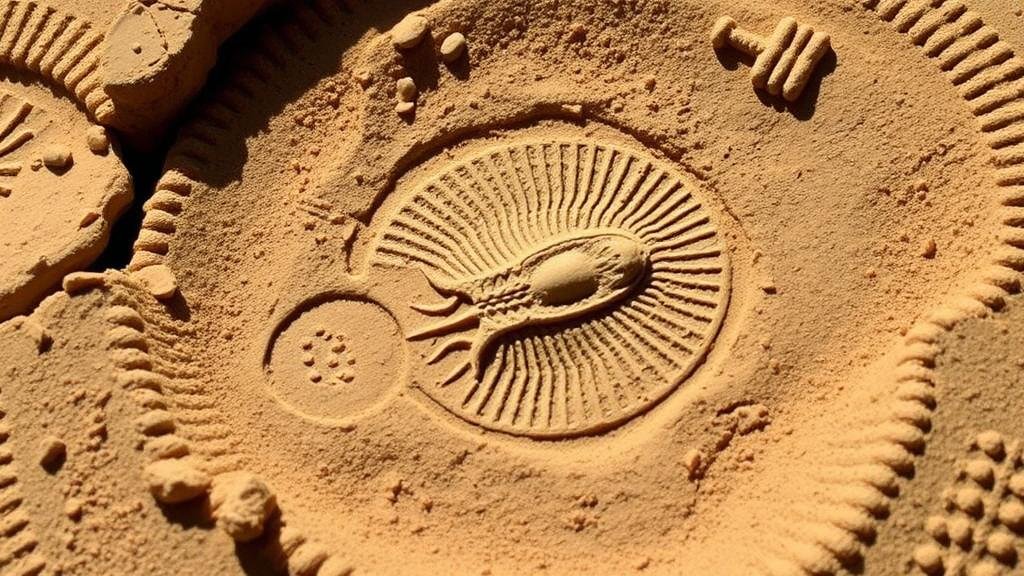Unearthing trilobite imprints in Morocco’s desert slopes, revealing ancient seabed mysteries.
Unearthing Trilobite Imprints in Morocco’s Desert Slopes
Morocco has long been a treasure trove for fossil enthusiasts, particularly for rockhounds and mineral collectors drawn to the enigmatic trilobite imprints that adorn its desert slopes. These ancient creatures, which roamed the seas over 500 million years ago, offer a glimpse into Earths distant past, showcasing the diverse ecosystems that existed long before the age of dinosaurs. The discovery of trilobite fossils in Morocco not only serves as a significant record of prehistoric life but also provides collectors with unique specimens highly valued in both scientific and aesthetic circles.
The Geological Landscape of Morocco
Morocco’s geology is marked by an extraordinary mix of sedimentary layers that tell the story of ancient marine environments. eastern and southern regions, particularly around the Anti-Atlas mountains, are known for their rich deposits of fossils. The fossils mainly stem from the Cambrian and Ordovician periods, characterized by shallow sea beds that once covered the area.
One of the most notable sites is the Zguilma region, where trilobite fossils can be readily accessed by collectors. The fossils found here are often well-preserved, displaying intricate details that make them attractive for both display and study. In fact, some specimens can measure up to 30 centimeters in length, making them standout pieces for any collection.
Among the various species found in the Moroccan landscape, some of the most notable include:
- Phacops: Recognized for its large, distinctive eyes, this trilobite is a favorite among collectors due to its impressive size and detailed exoskeleton.
- Asaphus: Known for its broad, flat body and well-defined segments, this species is also commonly found in abundance.
- Trinucleus: This trilobite, featuring an ornate cephalon, stands out due to its unique morphology and rarity in other global fossil sites.
Why Collect Trilobites?
Collecting trilobites can be an enriching experience for both the hobbyist and professional paleontologist. Each fossil represents not just a creature but an entire ecosystem that existed over half a billion years ago. Here are some compelling reasons why trilobites are especially sought after:
- Scientific Value: Trilobites are vital for understanding the evolution and diversification of early life forms and can provide insights into past environmental conditions.
- Aesthetic Appeal: With their striking forms and intricate patterns, trilobites often become captivating display pieces in homes, offices, or museums.
- Investment Potential: High-quality and rare trilobite specimens can appreciate significantly in value over time, making them an interesting investment.
Collecting Tips
If you are considering embarking on a trilobite hunting adventure in Morocco, here are some practical tips to enhance your experience:
- Research Local Laws: Ensure you are aware of the legalities surrounding fossil collection, as various regions have different regulations.
- Go with Experts: Partnering with local guides or paleontologists can greatly increase your chances of finding high-quality fossils.
- Use the Right Tools: Invest in a quality rock hammer, chisels, and protective gear to ensure a safe and effective collection process.
- Document Your Finds: Always take clear photographs and notes about the location and conditions of your finds for future reference and valuation.
Conclusion: The Legacy of Trilobites
The quest to unearth trilobite imprints in Morocco’s desert slopes reveals more than just fossils; it uncovers a connection to primordial seas filled with life. Each discovery deepens our understanding of ancient marine ecosystems and the evolutionary history of life on Earth. For collectors, these imprints serve as both a link to the planets geological past and a testament to the beauty of natural history. Armed with knowledge and the right tools, anyone can embark on a rewarding journey to experience the marvel of trilobites firsthand.



